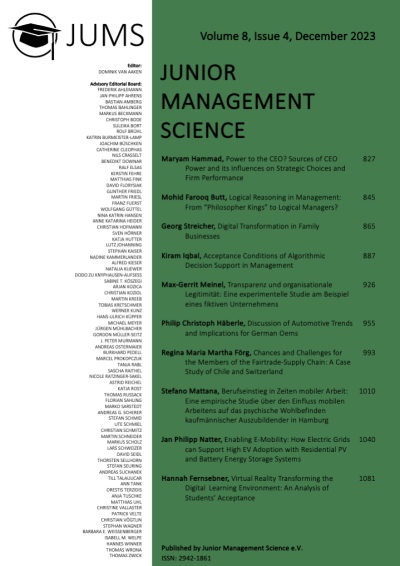Abstract
The rapid change in the automotive industry, largely triggered by four disruptive trends – autonomous driving, connectivity, electrification, and shared mobility (ACES) – poses major challenges for incumbent players. This thesis aims to provide a comprehensive literature review of these four trends and to discuss implications for German original equipment manufacturers (OEMs). To do so we use the structure of Strengths-Weaknesses-Opportunities-Threats (SWOT) analysis and apply both qualitative and quantitative methods. Furthermore, we introduce new frameworks that shall support companies in make-orbuy decisions and competitor analyses. To this end, we present a new metric that provides information on the innovative capacity of OEMs – the ACES Index. We conclude the following: (1) German OEMs can use their financial power, brand popularity, and global presence to conquer new markets. (2) The organizational structures of German OEMs slow down their innovative power in identifying and developing disruptive trends, which is why they had to give up their leading position to new competitors. (3) The ACES Index has a decisive influence on the market capitalization of an automotive company, which is why German OEMs should integrate future-relevant technologies into their value chains by developing their own capabilities or establishing partnerships.
Keywords: Automotive trends; Autonomous driving; Electric vehicle; Shared mobility; German OEMs.

Dieses Werk steht unter der Lizenz Creative Commons Namensnennung 4.0 International.
Copyright (c) 2023 Philip Christoph Häberle

